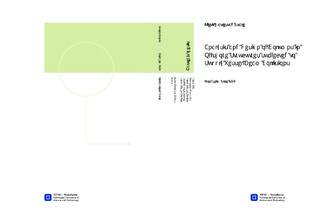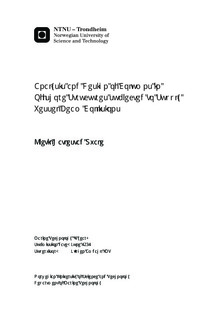| dc.contributor.advisor | Amdahl, Jørgen | nb_NO |
| dc.contributor.author | Qvale, Kjetil Hatlestad | nb_NO |
| dc.date.accessioned | 2014-12-19T12:08:19Z | |
| dc.date.available | 2014-12-19T12:08:19Z | |
| dc.date.created | 2012-11-08 | nb_NO |
| dc.date.issued | 2012 | nb_NO |
| dc.identifier | 566162 | nb_NO |
| dc.identifier | ntnudaim:7389 | nb_NO |
| dc.identifier.uri | http://hdl.handle.net/11250/238280 | |
| dc.description.abstract | During this Master Thesis, leg-segments of jacket platforms subjected to supply vessel impacts have been considered. Finite element analyses (FEA) have been conducted using the explicit solver LS DYNA. The FEA results have been discussed and compared against simplified calculation methods and basic theory. In order to investigate the effect of the surrounding structure, two sets of boundary conditions have been considered for the columns:- Perfectly clamed boundary conditions- Axial flexible boundary conditions. The results have shown that the effect of the surrounding structure should be included. The effect is most important of the strength of the column is small relative to the striking ship. Parameter studies of the column-design with respect to column diameter and thickness have been performed. Three column diameters have been considered, namely 1.0 m, 1.5 m and 2.0 m. The thickness has been varied from 30 mm 70 mm. Force-deformation relationships for the different columns have been compared and discussed. Based on the available amount of impact-energy, the different column-designs have been categorised as strength-designed, ductile-designed or shared-energy designed. The parameter study shows that if strength-design is aimed for, a column thickness of 70 mm in the case where the diameter = 1.5 m is required. If the column diameter is 2.0 m, strength design is achieved with a column thickness of 60 mm. Strength design was not achieved for the column with diameter = 1.0 m. However, based on the results, strength design of the 1.0 m column would probably require a thickness above 70 mm. The resistance against local indentation for the different columns have been considered and compared against resistance curves recommended by NORSOK N-004. The NORSOK-curves give a reasonable estimation of the strength for the weakest columns but becomes quite conservative compared to the strongest columns. An empirical design curve which takes the gradual increasing contact area into account was suggested based on the results. The resistance against global deformations have been compared against a simplified collapse mechanism. The results show that the accuracy of the simplified model is very dependent on the load definition and whether or not effects of reduced capacity due to local indentations are included. Two impact-scenarios have been considered: beam impacts and stern impacts. The beam impacts scenario proved to be the critical case in most cases. Finally, the effect of ring stiffeners applied in the collision-zone of the platform leg has been considered. 4 different designs have been evaluated. However, it was found that the effect on the column strength is larger if the column thickness is increased. | nb_NO |
| dc.language | eng | nb_NO |
| dc.publisher | Institutt for marin teknikk | nb_NO |
| dc.subject | ntnudaim:7389 | no_NO |
| dc.subject | MIMART Marin teknikk (2 årig) | no_NO |
| dc.subject | Marin konstruksjonsteknikk | no_NO |
| dc.title | Analysis and Design of Columns in Offshore Structures subjected to Supply Vessel Beam Collisions | nb_NO |
| dc.type | Master thesis | nb_NO |
| dc.source.pagenumber | 127 | nb_NO |
| dc.contributor.department | Norges teknisk-naturvitenskapelige universitet, Fakultet for ingeniørvitenskap og teknologi, Institutt for marin teknikk | nb_NO |

